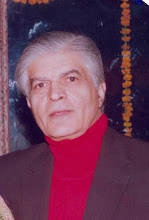SELF CARE 3
To sustain health-prevent disease-read symptoms-return to health
Target Population
In recent times India has registered a very impressive growth of its middle class – a class which was virtually non-existent in 1947 when India became a politically sovereign nation.
At the birth of independent India 62 years ago, the Indian middle class was a small and insignificant minority, less then 10% of the population.
To day, India’s middle class is one of the largest in the world, equal in some estimates to the population of the United States.
One aid to estimating the size of the middle class is the National Council of Applied Economic Research’s mid-1990’s report on the growing Indian middle class.
The survey said the very rich consisted of about 6 million. Then were the sub classes: The consuming class, about 150 million people (17%) the climbers, about 275 million people (30%); and the Aspirants, about 275 million. Beneath these were the destitute, estimated to be 210 million (23%).
The Middle classes on the whole (i.e. Consuming, climbers and aspirants) is expected to grow by 5 to 10 percent annually.
This Sizeable expansion of the middle class it is suggested is driven by a national drive of individuals and families to improve their earning capacity in a thriving economy.
The needs of this drive have been met in part by the expanding improved educational system.
The habitat of India’s new middle classes are the more than 200 cities with a population of over 100,000 filled with people who no longer look to the distant metropolises of Bombay or New Delhi for employment.
Rural prosperity is growing slowly reaching villagers that are the habitat of the rest of India’s population of one billion.
It has been estimated 100-200 million Indian uses the English language regularly.
It is the language used by the upper and growing middle classes.
English has five institutional and official roles at the National level.
- It is an associate official language alongside Hindi.
- It is an official state language in five states (North eastern states)
- An official language in the Union Territories including Delhi.
-It is one of the languages of the three language formula adopted in 1960 for educational purposes.
- English is used in the legal system, administration, armed forces, business, and in the Media.
To day English is the most effective medium for communicating in education, public administration and Industry.
This target English speaking population is the second largest of all countries in the world and with the rate of growth of the middle class it is likely to be the largest by the year 2010.
There is an urgent need for resource to insure this growing middle class in India be informed, (through awareness packages in the print and electronic media) of the concept that health as a personal resource.
That this resource needs to be protected and promoted by each citizen in his own interest, and the interest of his family.
That with the changes coming about in his lifestyles, habitat, and environment, he has to act as his own monitor, observe change, and changes his behavior in response, to protect his health.
This has become necessary since health sustains well being and this well being can be converted into capabilities and productivity.
This self-care mindset if adoption by the middle class, will be the accepted norm for new entrants to the middle classes, and may in time show an acceptance response in other population segments
Any questions be sent to drmmkapur@gmail.com you will receive a response
All posts are stored in the archives for access and review.
Wednesday, December 9, 2009
Subscribe to:
Post Comments (Atom)





視訊美女,豆豆聊天室,微風成人,情色,視訊聊天室,ut聊天室,聊天室,正妹牆,全民愛愛區,情色文學,正妹計時器,自拍貼圖,視訊交友,玩美女人,嘟嘟成人,哈比寬頻成人,貼圖區,色情小遊戲,同志聊天室,ut聊天室,美女寫真,嘟嘟貼圖區,成人論壇,巨乳,上班族聊天室,成人遊戲,情色a片,美女遊戲,情色自拍,漫畫貼圖,成人電影,成人文學,視訊,情色論壇,聊天,免費視訊,666成人,情色a片,成人遊戲,上班族聊天室,
ReplyDelete